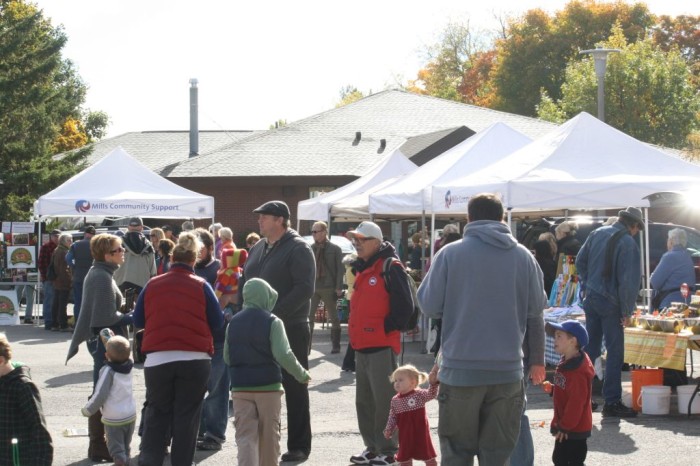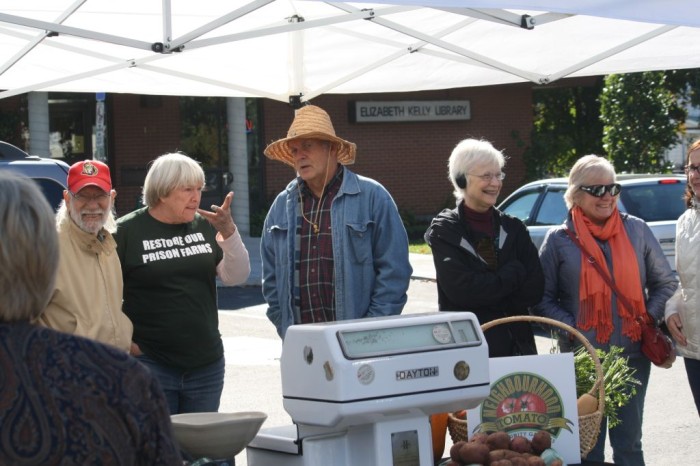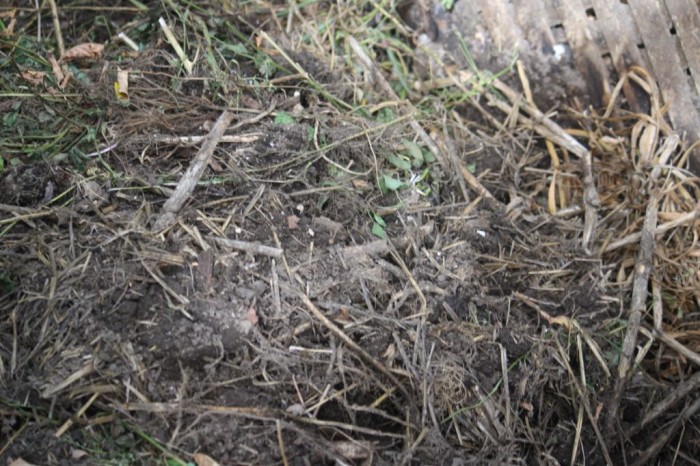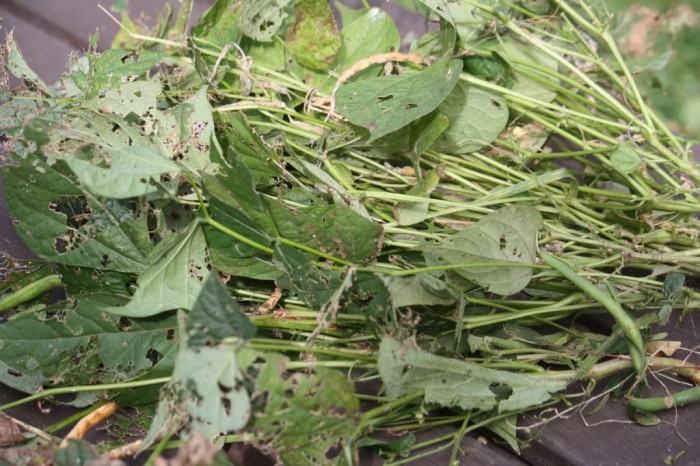






A perfect Thanksgiving weekend made it very pleasant to finish up the fall gardening tasks – cleaning out the compost bins, spreading compost on the garden beds, clearing plants from the growing beds and adding them to the composter, clipping the dead or dying foliage of perennials (remember to leave upright stems with seed pods such as coneflowers as winter feed for the birds) and digging and storing the summer bulbs and tubers such as dahlias, gladiolus and cannas. When building the compost pile remember to layer the plants with 2 parts dry to one part wet. As shown in the following photo I am layering in garlic stems at the bottom as they will help ensure that oxygen is able to reach all parts of the pile. Save a few shovelfuls of compost from the old pile to add to the new, thus introducing all the bacteria that you will need to feed the composting process.

While winter is just around the corner and the focus has been on harvesting and cleaning up the garden, my focus shifted this past weekend to planting garlic. I always find this such a symbolic activity, planting in anticipation of a harvest next July/August. While the rest of the garden is winding up the annual cycle of growth and harvest, the little garlic cloves will be growing up to ten cm of roots this fall and will be ready to produce strong green shoots when the snow has barely gone next spring.
I first prepared the growing bed by adding some of my own compost and some well-aged horse manure from my closely guarded secret source (I recycle used bags to carry the manure) and then worked it up with a spading fork.


I then broke apart the garlic bulbs into the individual cloves, planting the large ones and saving the small ones for culinary purposes. The variety I plant is called Music – I have found that it is the most versatile garlic for my purposes – it is reliable and easy to grow, it is very winter hardy, it produces large cloves, stores relatively well and has a very pleasant pungent garlic flavour. I plant with the pointed end up 15 cm apart in rows 20 to 25 cm apart (I plant three rows on my raised beds that are about a metre wide). I push the cloves into the soil with my fingers until they are covered with about four cm of soil and then cover with the back side of a garden rake and lightly tamp. Once we’ve had a couple of hard frosts I will cover the beds with about ten cm of straw as a mulch to protect the garlic from winter thaws.


While the frost-sensitive plants such as basil, tomatoes or peppers are now mostly just memories, the cool-weather plants such as kale, chard, parsley and salad greens will continue happily for a few more weeks (hopefully). The following photo shows an oak-leaf lettuce luxuriating in the beautiful fall weather.

When clearing the garden beds I carefully check any remaining bean and pea vines for any dry seed pods that I may have missed when I was picking their fresh produce. The following photo shows a bunch of bean plants destined for the compost bin. In amongst the tattered plants some dried seed pods are easy to pick out.

These seed pods may be cracked open and the bean seeds collected, dried and then stored for planting next spring. Saving seeds of peas and beans is one of the easiest ways to start on the path to seed saving. Peas and beans have self-pollinating flowers, those in which the flower accepts its own pollen, with or without insect intervention, so the possibility of cross-pollination with other plants is greatly diminished (by 95 per cent or more). Most other vegetables are either wind-pollinated (corn, beets, spinach, Swiss chard) or insect-pollinated (most of the rest). Cross-pollination only occurs within a species but can result in very surprising results. For example carrots readily cross-pollinate with Queen Anne’s Lace, a common ‘weed’ but a very close relative – the resulting seed would probably produce long white skinny inedible roots. And of course cross-pollination does not affect this year’s crop, only the seed that is produced and that will be planted the following year.
The following photo shows bean seeds that I have collected from a European filet bush bean named Oceanis, that are very slim and that have a distinctive ‘bean’ taste. Seeds are about half the size of the more common American varieties.


